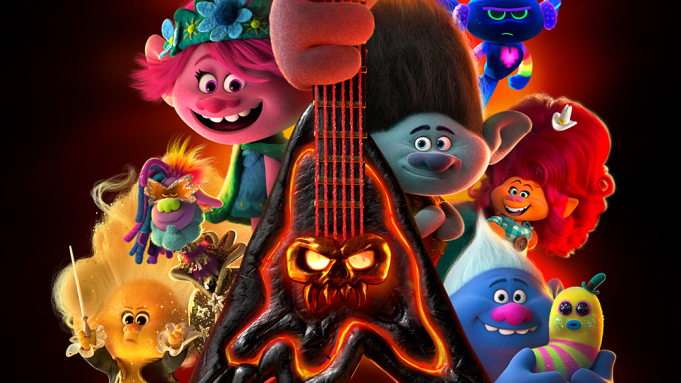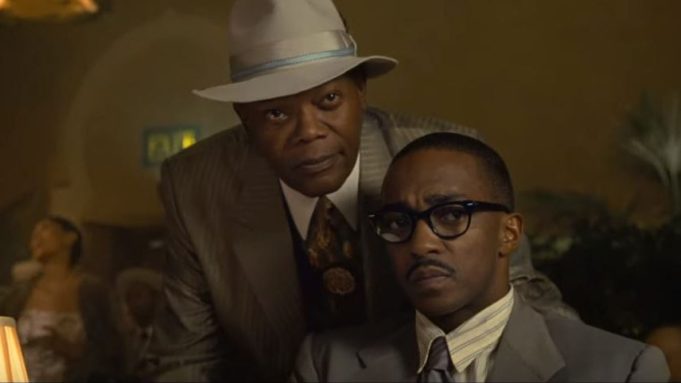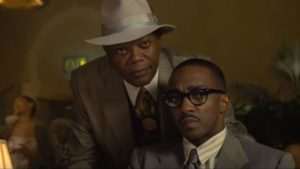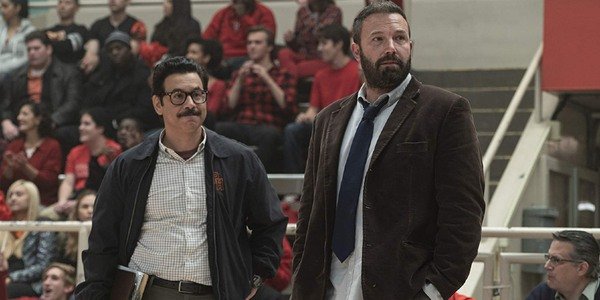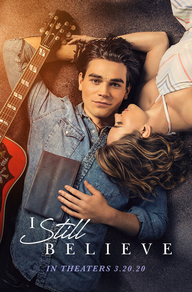Trolls: World Tour
Posted on April 10, 2020 at 11:02 am
B +| Lowest Recommended Age: | Kindergarten - 3rd Grade |
| MPAA Rating: | Rated PG for some mild rude humor |
| Profanity: | None |
| Alcohol/ Drugs: | None |
| Violence/ Scariness: | Some peril, no one hurt |
| Diversity Issues: | A theme of the movie |
| Date Released to Theaters: | April 10, 2020 |
| Date Released to DVD: | July 7, 2020 |
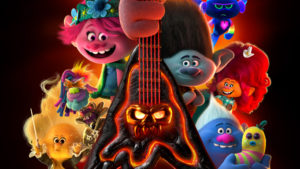
Remember on “Sesame Street” when they ask, which one of these four things is not like the other? “One of these doesn’t belong.” But there are a lot of ways to look at what is same and what is different, as “Trolls: World Tour” explores in a surprisingly subtle and nuanced theme in the midst of so much…well, just so much.
This sequel to the popular original film based on the little fuzzy-haired so-ugly-they’re-cute 1960’s fad dolls begins where the last one left off. Formerly cynical Branch (Justin Timberlake) has now learned to be happy, or happy-ish, and the eternally cheery Poppy (Anna Kendrick) is now Queen. Everything is glitters and rainbows and especially music music music, with a dizzying array of song snippets millennial parents will recognize. The snippets contribute to a a hyper, ADD quality that at times makes viewers feel shaken by the shoulders to make sure we notice we are being ENTERTAINED.
But happily-ever-after endings must be undone if there is to be a sequel and so Poppy learns that the pop-music trolls are not the only trolls and, even more surprising, pop music is not the only music. There’s even a map showing all of the different troll music communities, covering country, reggae, classical, hip-hop, funk, EDM, rock and more. (But it’s an old map — there’s no disco anymore. Even a movie about how harmony means accepting and enjoying every kind of music, disco is still over.)
Once all trolls were together, guided by a lyre with magical strings. But then they broke up into separate divisions, each with one string to produce the music. Queen Barb of Rock (a delicious Rachel Bloom of “Crazy Ex-Girlfriend”), daughter of King Thrash (a very funny Ozzie Osborne), declares a world tour which ever-optimistic Poppy thinks is about bringing everyone together in a peaceful manner, but Barb wants to grab all of the strings and make rock the one music for all of Troll-dom. Will this be the day the music dies? Or will Poppy find a way to teach the world to sing in perfect harmony? Will there be guest appearances from music giants along the way? What do you think? Kelly Clarkson, George Clinton, and Mary J. Blige all show up, along with many more song snippets and a lot of candy-colored action.
Also in the mix is Sam Rockwell, Kendrick’s “Mr. Right” co-star (not for kids, but a great movie if you like dark humor about world-class assassins). Here he plays a suspiciously helpful troll centaur from country music land.
And somewhere in there are some genuinely thoughtful themes. Like “Frozen II,” this movie touches gently but candidly on the idea that history is written by the victors. What we’ve been told about the past should be questioned, especially if we are portrayed as the heroes. And the idea of same and different, what kinds of differences we should appreciate and support in each other and what kinds we should not, is raised with sophistication and yet still in an accessible manner.
As everyone knows, this movie was scheduled to be a big holiday weekend family movie theatrical release. Instead, in the age of COVID-19, it is the first major studio film being sent straight to streaming, both a gift to homebound families and something of an experiment in unprecedented times. It may seem a bit frantic after weeks of sequester, but it is a bright, tuneful, sweet story with a message of hope that seems especially welcome in the spring of 2020.
Parents should know that this film has some mild peril and brief potty humor. A male troll “gives birth” to a baby (pops out of his head, like Zeus and Minerva)
Family discussion: Which is your favorite kind of music and why? How are Poppy and Barb alike? Can you find three things that are the same about you and your family members and three things that are different?
If you like this, try: “Trolls,” “Happy Feet,” and the “All Hail King Julien” series

